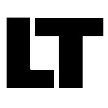“Form and content are of one here. The ‘Visual Piano’ performances explore professional contemporary artistic practice through the abstract, ephemeral medium of light, but at the same time they are consciously located in close proximity to the genre of ‘serious’ entertainment.”
Winfried Stürzl
“at.mur.at”
Kunst im Öffentlichen Raum Steiermark
ORF Musikprotokoll 2020
Laurenz Theinert: visual piano
Josef Klammer and Seppo Gründler: sound
Ninja Reichert: voice
The new city balcony on the banks of the Mur at the Radetzky Bridge becomes a stage: Josef Klammer and Seppo Gründler have designed a performance with sound, light and text for this location. The artistic approach to the Mur is also reflected in the project name at.mur.at. The banks are projection surfaces; different urban spaces are connected visually and acoustically. The libretto was written by Volha Hapeyeva, the Graz City Writer 2019/2020, and interpreted by actress Ninja Reichert. The media artist Laurenz Theinert creates abstract light spaces with his “Visual Piano”.
“Die Sonografen”
Kunststiftung Erich Hauser, 2020
Fried Dähn: cello and electronics
Laurenz Theinert: visual piano
The media and light artist Laurenz Theinert plays on the visual piano, a worldwide unique digital image instrument together with Fried Dähn on the cello. Fried Dähn turns the cello suites of Johann Sebastian Bach into a new sound experience. And Laurenz Theinert instantly interprets what he hears into structures and patterns. In real time, in the course of this spontaneous dialogue, the pyramid is transformed into a completely new cosmos of moving lines, surfaces and colors, as well as into an extraordinary world of sound.
“Ephemeres”
Röhm Areal Schorndorf, 2019
Laurenz Theinert: visual piano
Martin Schnabel: electric violin and effects
Matt Fleischmann: electric guitar and effects
camera: Dietke Hellwig
In Laurenz Theinert’s light concerts, graphic patterns are generated live and in real time, making them as spontaneously playable as the music of Martin Schnabel and Mattz Fleischmann. For this, he uses the unique instrument ‘visual piano’, which he developed in collaboration with a computer scientist friend Philipp Rahlenbeck. It enables him to fill spaces with graphic patterns in real time without the use of prefabricated clips.
“Klang-Licht-Spiel”
Städtische Galerie Kirchheim Teck, 2019
Laurenz Theinert: visual piano
Thomas Maos: electric guitar
“The interaction of the two exceptional artists is unparalleled: Through a virtuoso interplay of guitar and light piano, supported by loopers and self-built amplifiers, the spectator is taken on a sound journey inspired by light, which carries any mood: Oppressive end-time sounds are followed by black and white light spinning threads, which are replaced by melodic guitar riffs underpinned by azure blue. The audience claps enthusiastically to rhythmic club beats. Dancing circles are interrupted by shimmering straight lines, light nets spread out and dissolve into barcode-like structures. The illuminations appear like imaginary brushstrokes on the almost 500-year-old Kirchheim city wall, which on this evening becomes a contemporary work of art made of colors, light and sound. …”
Anja Schulenburg, Teckbote
LUNA Festival Leuwarden, 2019
00:00 Electric Diplomat
03:20 Selu Herraiz
12:10 Rondje om de Noordpool
18:40 Null Wave
23:25 Jurriën Voetberg
Visual Piano is pure visual music, live, abstract and space-filling with panoramic projections that show the Blokhuispoort in a new way with the help of light. The facades of the courtyard of the old prison are covered with abstract patterns, dancing lines and most beautiful colors. Theinert uses the MIDI signals from his keyboard, not to create sounds with them, but to compose live graphics. Striking the keys creates new shapes and movements that give the space a completely new visual dimension. A virtuoso interplay of light and sound in this special place.
Artistic direction: Andrea Möller
Production: Mediaart Friesland
Kulturcampus Domäne Hildesheim, 2019
Laurenz Theinert: visual piano
Arne Dreske: sound
From October 11-13, 2018, the University of Hildesheim hosted the 4th Annual Conference of the Cultural Studies Society on the topic of ‘Aesthetic Practice and Cultural Studies Research.’ The term aesthetic practice is a concept of cultural studies that is open in a productive sense and in this context denotes a way of acting in which creative play spaces, performative expressive movements, and bodily-sensual situatedness play a central role. In this sense, there will be a live audiovisual performance by Laurenz Theinert and Arne Dreske in the courtyard of the Domäne in the evening.
CIDNEON Festival, Breschia, 2017
Laurenz Theinert: visual piano
Ercole Gentile: DJ set
Camera: Detlef Hartung
“The skin we call reality”
Interference Tunis, 2016
Music: Salah el-Quergli, Trappa Kekli and Jihed Khmiri, Saif Eddine Srairi.
Light defines the visual world for us, but we assign it to objects that only reflect the light. Basically, all we see is a thin, ever-changing ‘skin’ stretched over the material world. If we drill a few millimeters below this surface, darkness reigns. Using this visual skin to play and making the audience aware of it is the idea behind the visual piano-light performances.
Curators: Bettina Pelz, Aymen Gharbi
Lichtungen Hildesheim, 2016
Kostia Rapoport and Sebastian Kunas: sounds
Laurenz Theinert: visual piano
Laurenz Theinert’s audiovisual concerts are in the tradition of the ‘Farblichtklavier’. His focus is on the interdependence of light, matter, space, time and perception as visual events in the sense of concrete art. The graphic projections are created live in the interaction with the musicians Kostia Rapoport and Sebastian Kunas as well as with the ensemble of buildings around the marketplace.
Curator: Bettina Pelz
Production: International Art Projects Hildesheim e.V.
LUMINA Cascais, 2015
Ulrich Mitzlaff: cello
Laurenz Theinert: visual piano
LICHTSTRÖME Koblenz, 2011
Thomas Ankersmit and Valerio Tricoli: sound
Laurenz Theinert: visual piano
Ursula Scherrer: live video
Curation: Bettina Pelz, Tom Groll
Production: Koblenz Tourism
